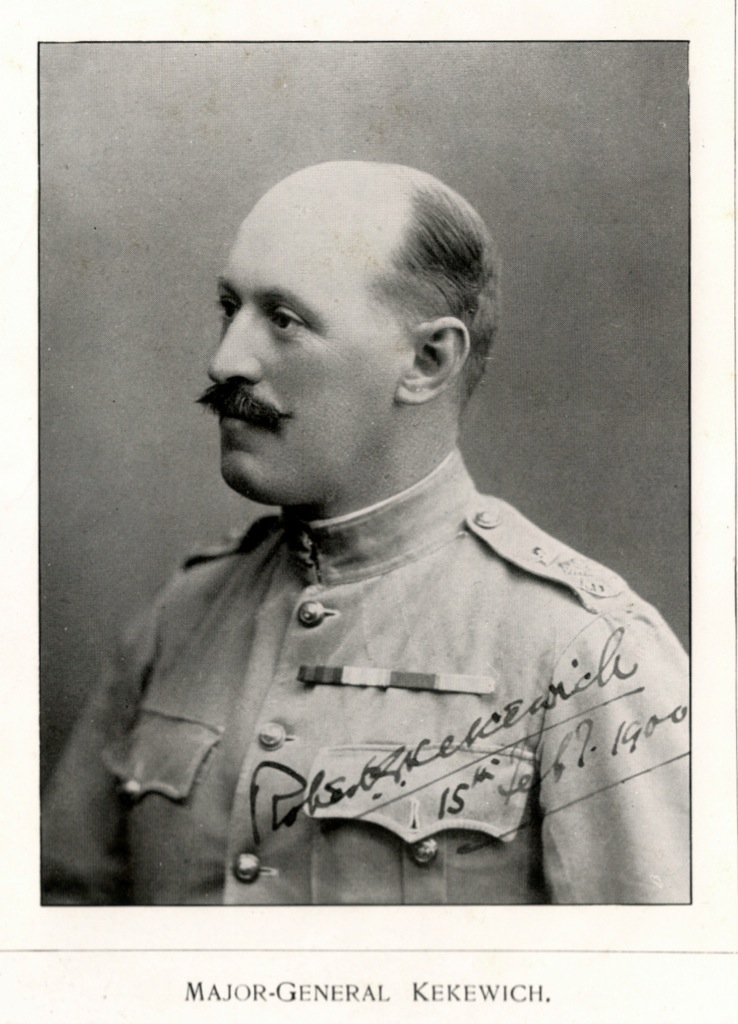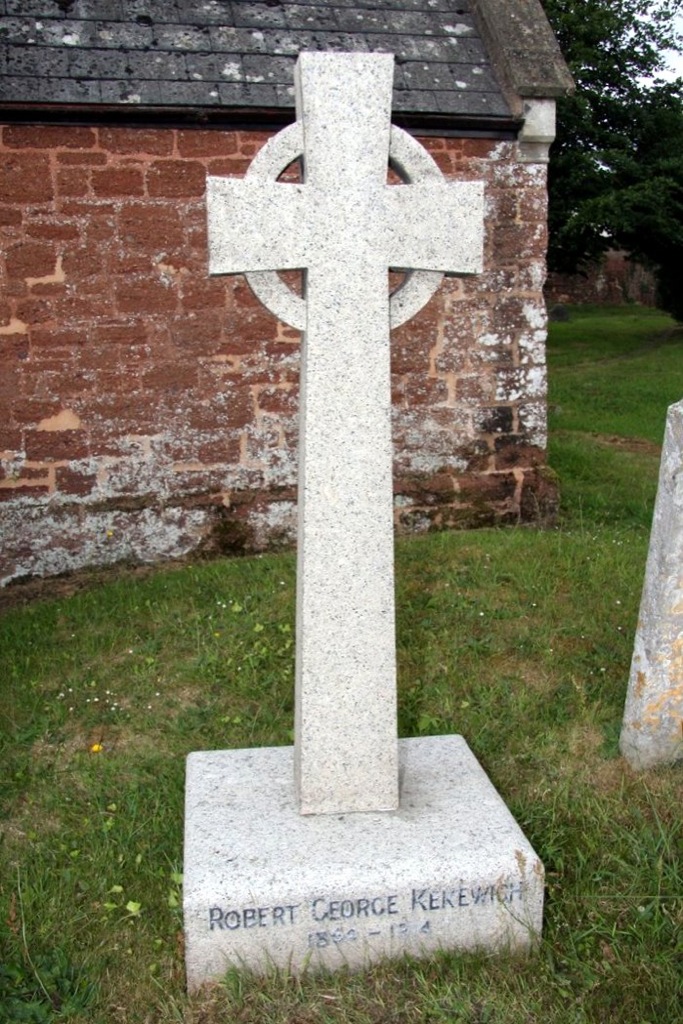The following biography of Robert George Kekewich is taken from the Old Edwardians’ Gazette, 10th November 1914:
“At the moment of going to press, we observe with great regret the tragic death of General Kekewich. He was, on November 5th [1914], says the Birmingham Daily Mail, found dead in bed with a gunshot wound in his head. The tragic discovery was made at his residence, Whimple House, Devon, by a sister. General Kekewich had been in a nursing home suffering from a nervous breakdown, but returned to his residence a few days ago.
A son of the late Mr Trehawke Kekewich, of Peamore, near Exeter, Robert George Kekewich was born in 1854. He was educated at King Edward’s High School, Birmingham, and at Marlborough. At the age of 20, he was gazetted through the militia into the old 102nd Foot, now the 1st Royal Dublin Fusiliers, from which he transferred in a fortnight to the Buffs. Almost immediately, he saw service in the Perak Expedition of 1875-6 [in Singapore]. He served for a time as adjutant of his battalion, and as a Captain was in 1884 appointed Deputy Assistant Adjutant and Quartermaster-General in the Nile Expedition for the relief of Gordon. In this operation, he so distinguished himself that he was given a Brevet Majority and a staff appointment in Egypt as Brigade-Major. In that capacity, he again served with distinction in the Soudan in 1888, and was present in the action of Gammaizah. Having left Egypt and attained promotion to a substantial majority in the Royal Inniskilling Fusiliers, he served for six years, from 1891-97 on the personal staff of the Madras Command. In 1897 he rejoined the Royal Inniskilling Fusiliers as second-in-command, and in June 1898 was transferred on promotion to the command of the 1st Loyal North Lancashire Regiment.
When the war in South Africa broke out, the Loyal North Lancs were already in Cape Colony, and were promptly sent up under Colonel Kekewich to the Western border. One wing of the regiment went to De Aar and subsequently took part in Methuen’s battles, whilst the other was sent to Kimberley, of which Colonel Kekewich was appointed military commandant. The defence of Kimberley was skilfully managed, and at the conclusion of the siege, which lasted 126 days, the gallantry and resourcefulness of the officer on whom the command of the garrison was developed was recognised in his promotion as Major-General.
It will be remembered that General Kekewich was present at one of the annual dinners, of the [Old Edwardians] Association shortly after the Boer war, and that he took the chair at the last Triennial Dinner of Old Edwardians, held in the school December 1912, when his genial presence greatly helped the success of the gathering. He was a Vice-President of the Association.”
Major-General Kekewich left his estate of £23,743 to his brother, Trehawke Herbert Kekewich, and his sister, Julia Frances Kekewich. He is buried in St Martin’s Church Cemetery, Exminster, and is commemorated on a foundation stone of Exminster Victory Hall. The King Edward’s School Chronicle of February 1900 describes him as having a reputation for, “untiring energy and a happy, tactful manner in dealing with others above and below him.” He was also held in very high esteem by the inhabitants of Kimberley and the Empire. He was presented with, among other things, a signed photograph of Queen Victoria (which she presented to him herself), two separate Swords of Honour from the inhabitants of Kimberley and Devon, and two diamonds and a gold cigarette case from the women of Kimberley.
At the time of his death, Major-General Kekewich was serving as Divisional Commander of the 13th (Western) Division.





